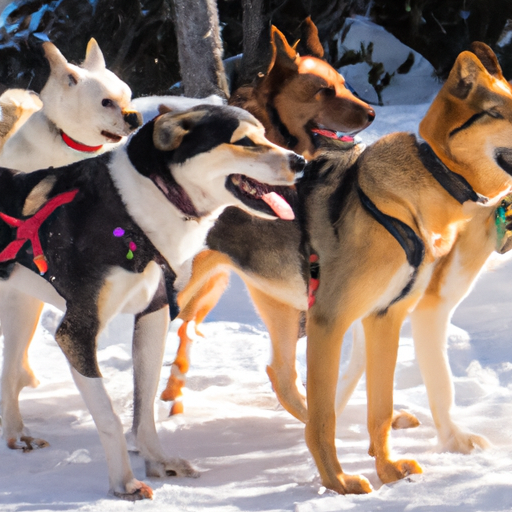As a caregiver, you understand the importance of knowing the unique traits and needs of those in your care. So, when it comes to sled dogs, it’s essential to understand their history, their breeds, and their specific needs. Whether you’re a dog lover or interested in the rich history of these hardworking animals, you’ll find this guide informative and insightful.
1. The History of Sled Dogs
Sled dogs have been a part of human civilization for thousands of years. They’ve played a crucial role in cultures across the globe, from the frozen tundras of Siberia to the icy landscapes of Alaska.
These dogs were integral to the survival of many communities, providing essential transportation and companionship in remote and harsh environments. Over time, several distinct breeds evolved, each with unique traits beneficial to their specific environment and function.
2. The Breeds of Sled Dogs
There are several breeds typically associated with sled dog work. Each breed has unique characteristics that make them well-suited to this demanding job.
-
Alaskan Malamute: These dogs are large, energetic, and incredibly strong. They’re well-suited to heavy loads over long distances.
-
Siberian Husky: These are lighter, quicker dogs, renowned for their endurance and speed rather than their brute strength.
-
Samoyed: Known for their friendly demeanor and fluffy white coats, Samoyeds are strong, agile sled dogs.
-
Canadian Inuit Dogs: These dogs are highly adapted to the harsh Arctic environment, making them excellent sled dogs.
| Breed | Strength | Speed | Endurance |
|---|---|---|---|
| Alaskan Malamute | High | Moderate | High |
| Siberian Husky | Moderate | High | High |
| Samoyed | Moderate | Moderate | High |
| Canadian Inuit Dogs | High | Moderate | High |
3. The Care of Sled Dogs
As a caregiver, it’s crucial to understand the specific needs of sled dogs. These breeds are high-energy and need plenty of exercise. They’re also social animals, so they require a good deal of interaction and companionship.
They also have specific dietary needs. Because of their high energy levels and the hard work they’re bred for, sled dogs typically need a diet high in protein and fat.
4. The Training of Sled Dogs
Training a sled dog requires patience, consistency, and an understanding of the dog’s natural instincts and abilities. The process often begins when the dogs are puppies and continues throughout their lives.
You should be familiar with common commands used in sled dog training, including:
- “Hike” or “Mush” to start moving
- “Whoa” to stop
- “Gee” for right turns
- “Haw” for left turns
5. The Future of Sled Dogs
While sled dogs are no longer as crucial to survival as they once were, they continue to play a role in many societies. They’re popular in dog sports, and many people still rely on them for transportation in remote, snowy areas.
Moreover, these breeds are beloved companions, known for their loyalty, energy, and unique personalities.
FAQs
Q: Are all sled dogs purebred?
A: Not all sled dogs are purebred. Many are mixed breeds, chosen for their abilities rather than their pedigree.
Q: How long can a sled dog run?
A: This depends on the breed, but some sled dogs can run up to 100 miles in a day.
Q: Is it cruel to use dogs for sledding?
A: When treated and cared for correctly, sled dogs enjoy the work they do. It’s crucial to ensure their needs are met and they’re not overworked.
Q: How many dogs are usually in a sled team?
A: The number can vary, but typically, a sled team consists of between 4 and 10 dogs.
Q: Can sled dogs live in warm climates?
A: While sled dogs are bred for cold climates, they can adapt to warmer environments. However, they may require additional care to ensure they stay cool and comfortable.
As you delve deeper into the world of sled dogs, you’ll find a rich history and a group of breeds each with their own unique traits. Understanding these breeds and their needs is the first step to providing the best possible care for these remarkable animals.



